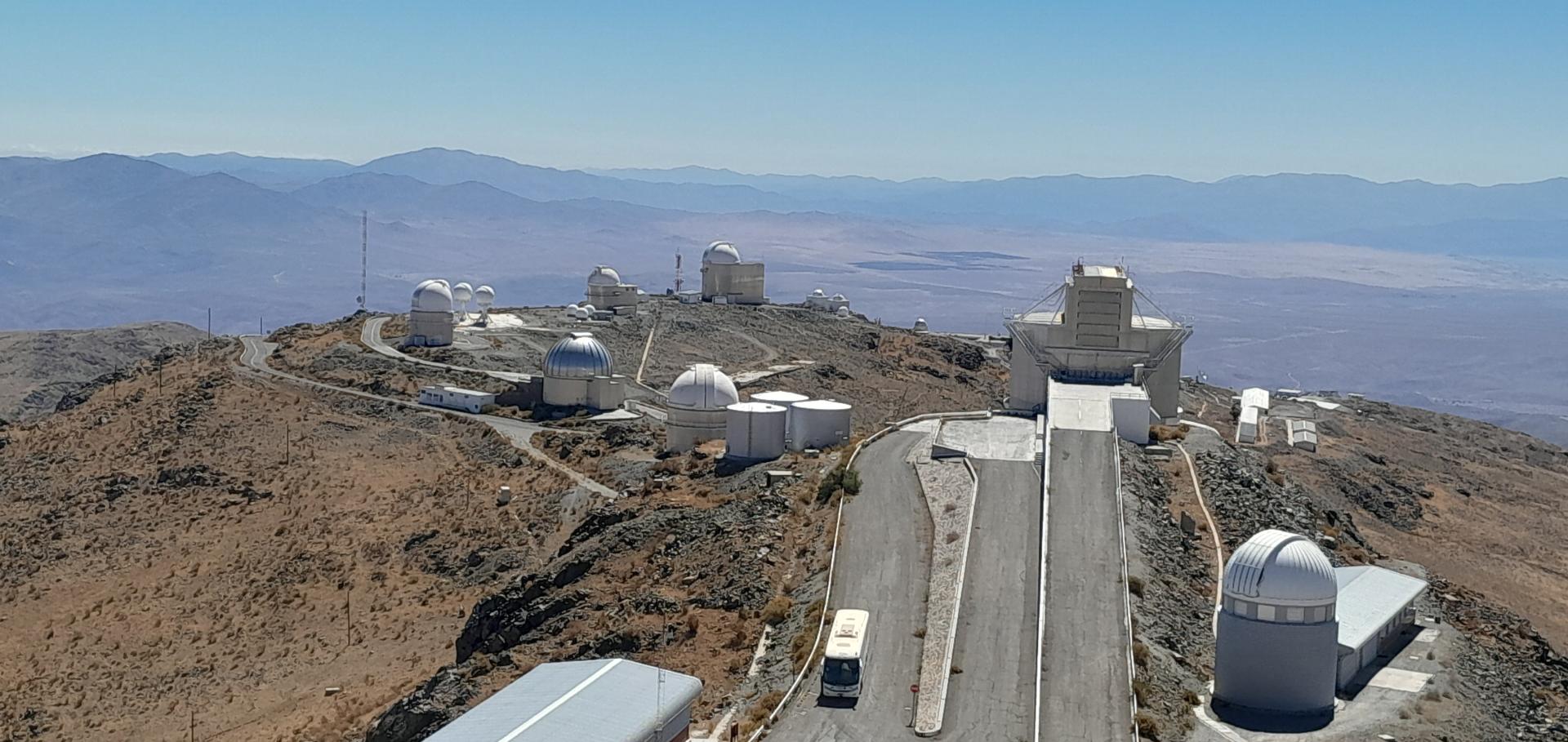Planet-induced radio emission from the coronae of M dwarfs: the case of Prox Cen and AU Mic
Monthly notices of the Royal Astronomical Society, in press
Abstract:
There have recently been detections of radio emission from low-mass stars, some of which are indicative of star-planet interactions. Motivated by these exciting new results, in this paper we present Alfvén wave-driven stellar wind models of the two active planet-hosting M dwarfs Prox Cen and AU Mic. Our models incorporate large-scale photospheric magnetic field maps reconstructed using the Zeeman-Doppler Imaging method. We obtain a mass-loss rate of 0.25 M˙⊙ for the wind of Prox Cen. For the young dwarf AU Mic, we explore two cases: a low and high mass-loss rate. Depending on the properties of the Alfvén waves which heat the corona in our wind models, we obtain mass-loss rates of 27 and 590 M˙⊙ for AU Mic. We use our stellar wind models to assess the generation of electron cyclotron maser instability emission in both systems, through a mechanism analogous to the sub-Alfvénic Jupiter-Io interaction. For Prox Cen we do not find any feasible scenario where the planet can induce radio emission in the star's corona, as the planet orbits too far from the star in the super-Alfvénic regime. However, in the case that AU Mic has a stellar wind mass-loss rate of 27 M˙⊙ , we find that both planets b and c in the system can induce radio emission from ∼10 MHz - 3 GHz in the corona of the host star for the majority of their orbits, with peak flux densities of ∼10 mJy. Detection of such radio emission would allow us to place an upper limit on the mass-loss rate of the star.
Investigating the young AU Mic system with SPIRou: large-scale stellar magnetic field and close-in planet mass
Monthly Notices of the Royal Astronomical Society, Volume 502, Issue 1, pp.188-205
Abstract:
We present a velocimetric and spectropolarimetric analysis of 27 observations of the 22-Myr M1 star AU Microscopii (AU Mic) collected with the high-resolution YJHK (0.98-2.35 μm) spectropolarimeter SPIRou from 2019 September 18 to November 14. Our radial velocity (RV) time-series exhibits activity-induced fluctuations of 45 m s-1 rms, ∼3 times smaller than those measured in the optical domain, that we filter using Gaussian Process Regression. We report a 3.9σ detection of the recently discovered 8.46 -d transiting planet AU Mic b, with an estimated mass of 17.1 +4.7−4.5 M⊕ and a bulk density of 1.3 ± 0.4 g cm-3, inducing an RV signature of semi-amplitude K = 8.5 +2.3−2.2 m s-1 in the spectrum of its host star. A consistent detection is independently obtained when we simultaneously image stellar surface inhomogeneities and estimate the planet parameters with Zeeman-Doppler imaging (ZDI). Using ZDI, we invert the time-series of unpolarized and circularly polarized spectra into surface brightness and large-scale magnetic maps. We find a mainly poloidal and axisymmetric field of 475 G, featuring, in particular, a dipole of 450 G tilted at 19° to the rotation axis. Moreover, we detect a strong differential rotation of dΩ = 0.167 ± 0.009 rad d-1 shearing the large-scale field, about twice stronger than that shearing the brightness distribution, suggesting that both observables probe different layers of the convective zone. Even though we caution that more RV measurements are needed to accurately pin down the planet mass, AU Mic b already appears as a prime target for constraining planet formation models, studying the interactions with the surrounding debris disc, and characterizing its atmosphere with upcoming space- and ground-based missions.
The large-scale magnetic field of Proxima Centauri near activity maximum
Monthly Notices of the Royal Astronomical Society, Volume 500, Issue 2, pp.1844-1850
Abstract:
We report the detection of a large-scale magnetic field at the surface of the slowly rotating fully convective (FC) M dwarf Proxima Centauri. 10 circular polarization spectra, collected from 2017 April to July with the HARPS-Pol spectropolarimeter, exhibit rotationally modulated Zeeman signatures suggesting a stellar rotation period of 89.8 ± 4.0 d. Using Zeeman-Doppler Imaging, we invert the circular polarization spectra into a surface distribution of the large-scale magnetic field. We find that Proxima Cen hosts a large-scale magnetic field of typical strength 200 G, whose topology is mainly poloidal, and moderately axisymmetric, featuring, in particular, a dipole component of 135 G tilted at 51° to the rotation axis. The large-scale magnetic flux is roughly 3× smaller than the flux measured from the Zeeman broadening of unpolarized lines, which suggests that the underlying dynamo is efficient at generating a magnetic field at the largest spatial scales. Our observations occur ˜1 yr after the maximum of the reported 7 yr-activity cycle of Proxima Cen, which opens the door for the first long-term study of how the large-scale field evolves with the magnetic cycle in an FC very low mass star. Finally, we find that Proxima Cen's habitable zone planet, Proxima-b, is likely orbiting outside the Alfvèn surface, where no direct magnetic star-planet interactions occur.
Early science with SPIRou: near-infrared radial velocity and spectropolarimetry of the planet-hosting star HD 189733
Astronomy & Astrophysics, Volume 642, id.A72, 16 pp.
Abstract:
SPIRou is the newest spectropolarimeter and high-precision velocimeter that has recently been installed at the Canada-France-Hawaii Telescope on Maunakea, Hawaii. It operates in the near-infrared and simultaneously covers the 0.98-2.35 μm domain at high spectral resolution. SPIRou is optimized for exoplanet search and characterization with the radial-velocity technique, and for polarization measurements in stellar lines and subsequent magnetic field studies. The host of the transiting hot Jupiter HD 189733 b has been observed during early science runs. We present the first near-infrared spectropolarimetric observations of the planet-hosting star as well as the stellar radial velocities as measured by SPIRou throughout the planetary orbit and two transit sequences. The planetary orbit and Rossiter-McLaughlin anomaly are both investigated and modeled. The orbital parameters and obliquity are all compatible with the values found in the optical. The obtained radial-velocity precision is compatible with about twice the photon-noise estimates for a K2 star under these conditions. The additional scatter around the orbit, of about 8 m s-1, agrees with previous results that showed that the activity-induced scatter is the dominant factor. We analyzed the polarimetric signal, Zeeman broadening, and chromospheric activity tracers such as the 1083nm HeI and the 1282nm Paβ lines to investigate stellar activity. First estimates of the average unsigned magnetic flux from the Zeeman broadening of the FeI lines give a magnetic flux of 290 ± 58 G, and the large-scale longitudinal field shows typical values of a few Gauss. These observations illustrate the potential of SPIRou for exoplanet characterization and magnetic and stellar activity studies.
Based on observations obtained at the Canada-France-Hawaii Telescope (CFHT) which is operated from the summit of Maunakea by the National Research Council of Canada, the Institut National des Sciences de l'Univers of the Centre National de la Recherche Scientifique of France, and the University of Hawaii. Based on observations obtained with SPIRou, an international project led by Institut de Recherche en Astrophysique et Planétologie, Toulouse, France.
Based on observations obtained at the Canada-France-Hawaii Telescope (CFHT) which is operated from the summit of Maunakea by the National Research Council of Canada, the Institut National des Sciences de l'Univers of the Centre National de la Recherche Scientifique of France, and the University of Hawaii. Based on observations obtained with SPIRou, an international project led by Institut de Recherche en Astrophysique et Planétologie, Toulouse, France.
Simulated mass measurements of the young planet K2-33b
Monthly Notices of the Royal Astronomical Society: Letters, Volume 493, Issue 1, p.L92-L97
Abstract:
In this paper, we carry out simulations of radial velocity (RV) measurements of the mass of the 8-11 Myr Neptune-sized planet K2-33b using high-precision near-infrared velocimeters like SPIRou at the Canada-France-Hawaii Telescope. We generate an RV curve containing a planet signature and a realistic stellar activity signal, computed for a central wavelength of 1.8 µm and statistically compatible with the light curve obtained with K2. The modelled activity signal includes the effect of time-evolving dark and bright surface features hosting a 2 kG radial magnetic field, resulting in an RV signal of semi-amplitude ∼30 m s-1. Assuming a 3-month visibility window, we build RV time series including Gaussian white noise from which we retrieve the planet mass while filtering the stellar activity signal using Gaussian process regression. We find that 35/50 visits spread over three consecutive bright-time runs on K2-33 allow one to reliably detect planet RV signatures of, respectively, 10 and 5 m s-1 at precisions >3σ. We also show that 30 visits may end up being insufficient in some cases to provide a good coverage of the stellar rotation cycle, with the result that the planet signature can go undetected or the mass estimation be plagued by large errors.


